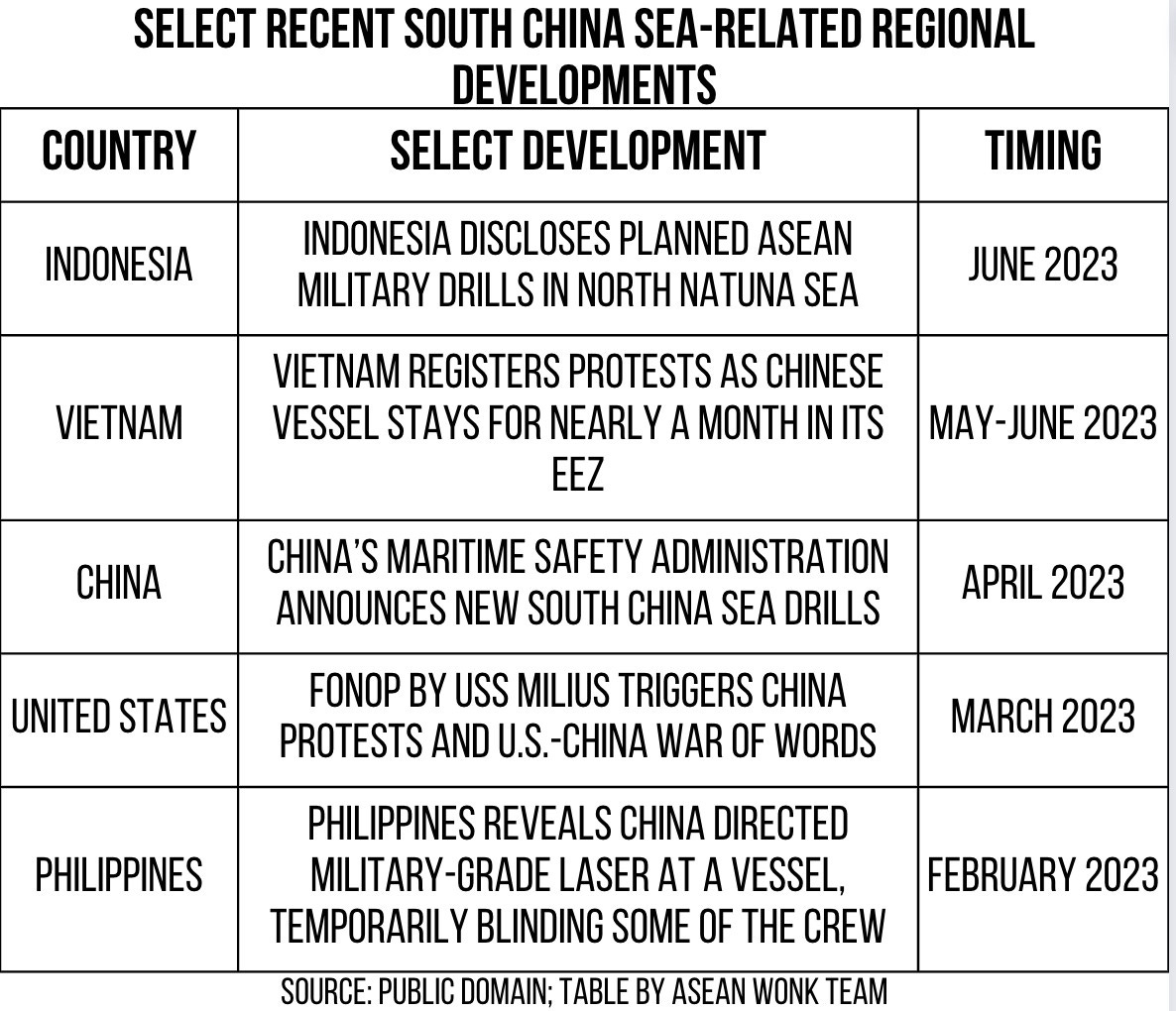Assessing ASEAN’s New South China Sea Drill Announcement
With details still forthcoming, a closer look at the specifics disclosed, emerging responses and potential effects on the grouping's wider regional agenda.

Though details are still forthcoming, Indonesia’s announcement of the first-ever ASEAN joint military drills in the South China Sea spotlights ongoing efforts to showcase a regional approach to the issue amid sobering realities. The announcement is not without significance, but also needs to be kept in perspective, with its future prospects evaluated alongside details regarding the exercise itself, responses thus far, the developing agenda for the grouping for the rest of 2023 and into 2024 and the wider evolving dynamics at play on the South China Sea.
WonkCount: 1,586 words (~ 8 minutes reading time)
Background
Indonesia has proven to be an important source of activism on the South China Sea question within ASEAN through the decades, even though the grouping’s overall role is limited. Though each ASEAN member state has a stake in safeguarding international law and managing disputes peacefully, their stakes vary and only four consider themselves claimants – Brunei, Malaysia, the Philippines and Vietnam (Indonesia does not technically call itself a claimant even though China’s nine-dash line overlaps with its exclusive economic zone around the resource-rich Natuna Islands). Within Indonesia’s multifaceted South China Sea approach, apart from managing the impacts of China’s maritime assertiveness on its own interests, Jakarta has at times displayed leadership on the issue at important periods, be it organizing conflict management workshops in the 1990s or picking up the pieces after ASEAN’s unprecedented failure to issue a joint communique over South China Sea divisions in 2012.
Yet ASEAN’s position on the South China Sea has become more worrying in recent years (see a few select regional developments in the graphic below). Chinese forces are continuing to routinely harass Southeast Asian states through interceptions of exploration work and dangerous maneuvers, while a meaningful, binding ASEAN-China code of conduct that has been decades in the making continues to prove elusive. As talks and statements continue to be issued, states are pursuing their own responses at sea on their own and with others, as evidenced by the Philippines’ acceleration of its involvement in minilateral security initiatives or Vietnam’s expansion of its outposts.
Significance
Within this context, the notion of ASEAN-wide drills in the South China Sea is a development worthy of attention. Indonesian Chief of National Defense Force Admiral Yudo Margono noted that an agreement was reached at the 20th ASEAN Chief of Defense Forces Meeting in Bali for the grouping to hold joint drills, labeled the ASEAN Solidity (ENatuna) or Asec01N in the North Natuna Sea later this year per ANTARA News. The North Natuna Sea designation reflects an official 2017 name change on Indonesia’s part for the resource-rich northern portion around its Natuna Islands, which lie in the southern end of the South China Sea.
Though details are still forthcoming, the holding of such drills would not be without significance. The South China Sea itself is a vast area that sees various regular interactions including exercises. But for ASEAN, a first exercise of its kind in the South China Sea would constitute a milestone within the grouping’s relatively recent history of holding wider exercises among ASEAN countries, with even the ASEAN Multilateral Naval Exercise (AMNEX) series only seeing its second iteration this year following the first in 2017. This would also be a symbolic demonstration of ASEAN’s relevance, at a time when headlines about exercises in the South China Sea are usually dominated by either minilateral arrangements or U.S.-China tensions.
For Indonesia, it would be an indication of how Jakarta is utilizing its ASEAN chairmanship this year to signal activism. While Indonesian President Joko “Jokowi” Widodo has personally not been as interested in geopolitical questions during his two terms relative to his predecessor Susilo Bambang Yudhoyono, and Jakarta still faces its own structural challenges managing China’s maritime assertiveness domestically, Indonesia has still been helping the advancement of initiatives in the regional security space, be it regular coast guard consultations or a defense version of the ASEAN Outlook on the Indo-Pacific (AOIP) which it had spearheaded back in 2019 and is trying to reinforce.
Yet a closer look at the specifics disclosed and related dynamics suggest that this significance also needs to be kept in perspective and evaluated in relation to its future prospects. This is particularly the case if we examine the details regarding the exercise itself, responses thus far, the developing agenda for the grouping for the rest of 2023 and into 2024 and the evolving dynamics at play on the South China Sea…





